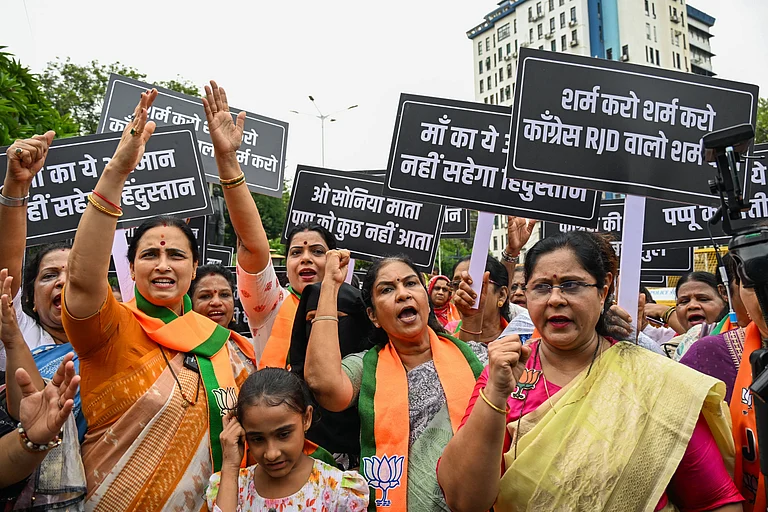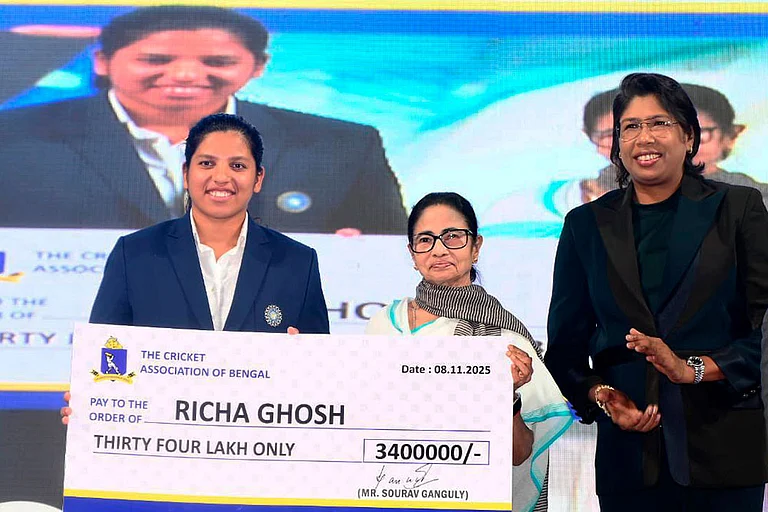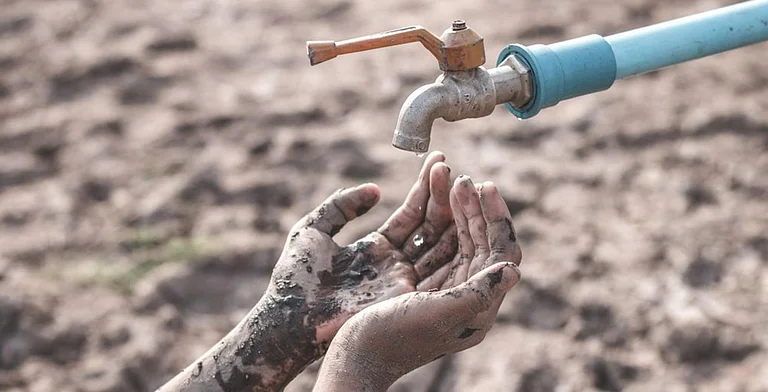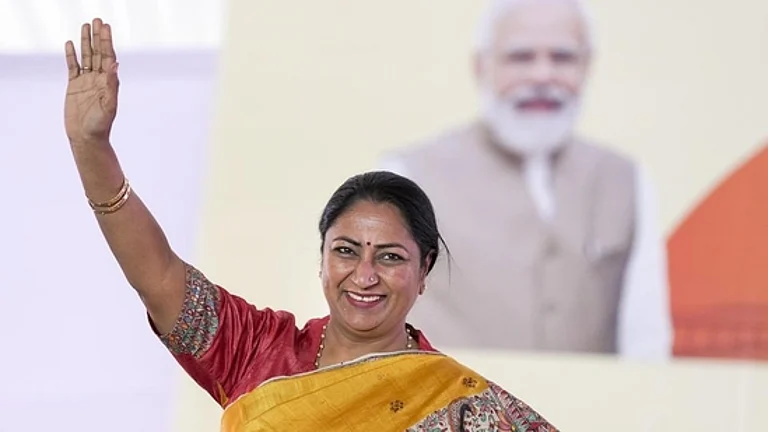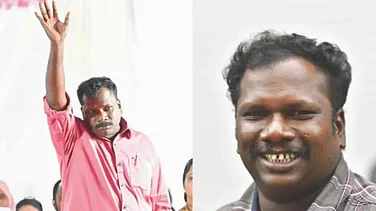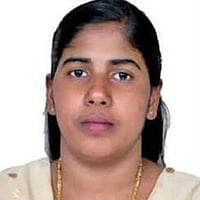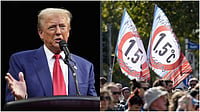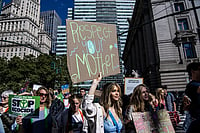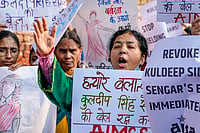
With the BJP in power in the national capital after 27 years, the rising presence of the BJP’s Mahila Morcha (Women’s unit) is making a mark under the leadership of the women’s wing president, Richa Pandey Mishra.
Being a social entrepreneur from IIT Madras and an ISB Goldman Sachs alumnus, she created a social enterprise.
Spearheading initiatives like ‘Sindoor Yatra’, Richa mobilised thousands of women across the country and in Delhi.
After a prolonged wait of 27 years, the BJP won the Delhi Assembly Elections in 2025, dethroning the Aam Aadmi Party (AAP). With time, what is making a mark is the rising presence of the BJP’s Mahila Morcha (Women’s unit) under the leadership of the BJP Delhi Mahila Morcha president Richa Pandey Mishra.
From carrying out ‘Sindoor Yatras’ in 56 Wards of Delhi, following the success of ‘Operation Sindoor’ in retaliation for the April 22 Pahalgam terror attack, to holding the Ahilya Bai Holkar training programs to educate their cadre about the ‘Queen of the 17th Century’ who united the country, the women’s wing is leaving no stone unturned to mobilise its women worker base.
Under Richa’s leadership, the BJP’s organisational horizon continues to expand in Delhi. Being a social entrepreneur from IIT Madras and an ISB Goldman Sachs alumnus, she created a social enterprise that trained and placed more than 10,000 rural youths of various states using the ICT ecosystem of IIT Madras. Speaking to Outlook, Richa shared her take on multiple aspects of the Mahila Morch activities under her silent and diligent leadership.
You shifted from leading AAP’s women’s wing to heading the BJP Delhi Mahila Morcha in 2019. What core lessons did you carry over, and what have you had to unlearn?
The BJP Mahila Morcha is an integral part of the BJP’s organisation. Each state has its Morcha unit and a national president of the Mahila Morcha. The morcha boasts of having stalwart leaders like Smt. Vijaya Raje Scindia, Smt.Sushma Swaraj, Smriti Irani, Saroj Pandey, and Vijaya Rahatkar have been its president in the recent past.
When I was made Mahila Morcha president of the BJP Delhi, I realised that I have a legacy to carry, a bigger picture to envisage and that I am a part of the chain that I am supposed to nurture and pass on. Mahila Morcha is a nurturing ground, a training field for women leaders who are constantly serving the country in various capacities.
The current Mahila Morcha national team boasts dozens of MPs, MLAs, councillors, and chairmen of various government bodies. We also have another chief minister, Rekha Gupta (after Shushma Swaraj), who was a part of the national morcha.
How do you explain the success of initiatives like the ‘Sindoor Yatra’ or mock parliament, beyond footfall or media coverage, to gauge real change in women’s political engagement?
Initiatives like ‘Sindoor Yatra’ mobilised thousands of women across the country, and in Delhi too, in their respective wards and assemblies, before culminating in a mega walkathon in Connaught Place.
‘Sindoor Yatra’ stirred the soul of an ordinary woman citizen and inspired her to hold the placard and walk with our teams on the streets near their home. The success of this yatra lies not merely in its huge number of participants but in connecting the hearts of ordinary women citizens and their families to this cause. Women wore red sarees, bindis, bangles, etc, as they felt strongly for the ‘shaheeds’.
Mock Parliament, on the other hand, trained and groomed the position holders of Mahila Morcha. It enhanced their academic capacities of reading, researching, and eventually debating about the topic of ‘Emergency’. They volunteered to become MPs, did their own research, practised for days with each other, which fostered team spirit, and enacted the mock parliament.
It is often seen that your team blends rituals (Yamuna Aarti, Sindoor Yatra) with policy advocacy. What are your thoughts on balancing symbolic events against hard-edged campaigns on issues like safety, health or reservation?
All the initiatives of the Mahila Morcha are in line with the ongoing campaigns of the leading party teams. The current issues and the ideological narratives are presented to the general public through various programs. The women’s wing undertakes Swacchata Campaigns, Labharthi drives to distribute LPG, health camps for the elderly and underprivileged, skill development and market connect camps for the underprivileged, to name a few.
The initiatives like ‘Yamuna Aaarti’ are not only connecting the masses with a particular ritual but also educating about the forgotten queen of our country, Rani Ahilya Bai Holkar, who was a visionary leader in the 17th century.
Her development model of economics and spiritualism is being presented to the general public of our country. All the initiatives of Mahila Morcha are targeting key development and progress issues that are being championed by Prime Minister Modi’s government.
You oversaw 29,000 drawing-room meetings in the Assembly campaign. What data-management or performance-tracking systems did you deploy to ensure consistency and follow-up?
Mahila Morcha also derives its technical strength from our party and party leaders. Whether it is making members through missed calls and capturing membership data on ‘Namo App’ or uploading our meeting details on our internal Management Information Systems (MIS) and apps, Mahila Morcha is hands-on with the latest technology used by the organisation.
During the assembly elections, Mahila Morcha undertook thousands of micro and drawing-room meetings and uploaded them in the internal tracking apps. The success of the team lies in not only uploading the data but also in the fact that those voters who were connected and met with during the elections turned up not only to vote but are now they are seen participating in the party’s other programs like Sindoor Yatra, Yamuna Aarti and Teej celebrations in Delhi.
The Delhi women’s wing spans diverse socio-economic groups. What mechanisms ensure that women from slums, minority communities and non-English speakers aren’t left behind?
The position holders of Mahila Morcha are socially active women from diverse socio-economic backgrounds. They are well-known people in their local areas.
They are our link with their communities and neighbourhoods. Mahila Morcha constantly engages with the local community leaders in every booth of the region and ensures that local participation is enhanced. We use technology as an enabler, while our primary focus is on personal meetings.
You’ve personally addressed menopause and health for the over-40 cadres. How did that become a priority, and what outcomes have you seen from integrating health into political training?
As an empathetic leader of the team, constant counselling, appreciating, listening and caring for the team members is a prerequisite for any BJP team leader.
The concept of ‘Karyakarta Sambhal’ is an integral part of our party practice. By integrating empathetic leadership practices in Mahila Morcha, we are enhancing our effectiveness.
Beyond protests, what is the BJP Mahila Morcha’s legislative wishlist for Delhi—are you drafting specific women-centric bills or proposals?
The Mahila Morcha has been involved from the scratch in preparing the promises for the women of Delhi in its 2025 Election ‘Manifesto’. Morcha held many focus group meetings with SHGs, NGOs, RWAs, Market Associations, women professionals, and small group meetings, and presented their ideas and wishlists in a months-long process to the party seniors.
The developmental work that is being undertaken in Delhi currently is an outcome of the echoes of the Mahila Morcha to a great extent.
How closely do you work with the BJP’s youth, SC/ST and OBC wings in Delhi? Can you share an example of a joint programme and its learning?
All the morchas work in coordination with each other. Other than the focused works of each morcha, we collaborate and contribute to mega drives.
For example, in our ‘Membership Drive’ campaigns, all the morchas collaborated with the main team, resulting in increased numbers. In ‘Swachhata Drive’, we all focus on our own areas of strength and so on.
With your track record, do you see yourself contesting an Assembly or parliamentary seat? If so, what constituency model do you envision?
Being in politics, it is a given that I would like to contest elections. I have been raised and live in East Delhi. Being a Purvanchali, I would like to represent the people of Purvanchal and solve their day-to-day problems as an elected representative when given the opportunity.
Looking ahead, what measurable legacy do you want to leave—be it voter-turnout improvements, cadre leadership diversity or enactment of specific laws—and how will you hold yourself accountable?
I see myself as an empathetic person who wants to invest my energies in creating processes and systems for transparency and human development. I see myself nurturing the teams, enabling transparent systems, and pushing causes for a progressive country. Last two decades of my life, I have tried to ‘be the change that I want to see’, and I would continue on the same path.










